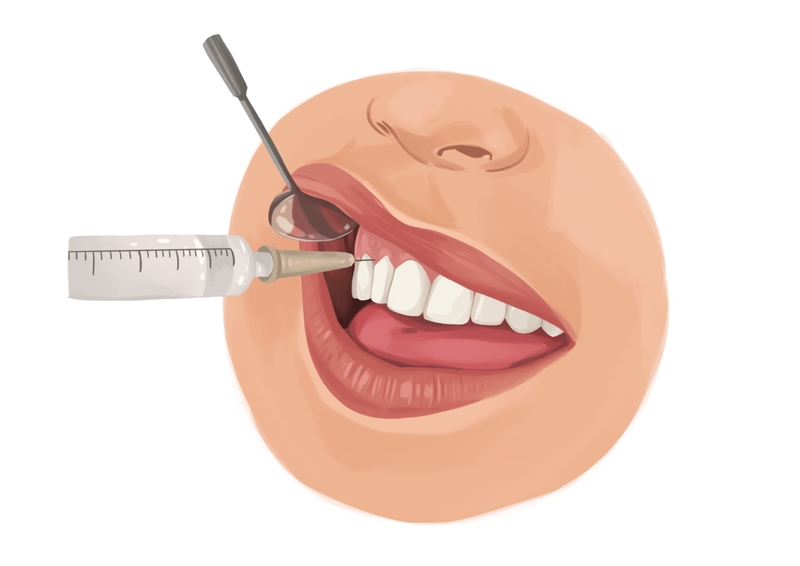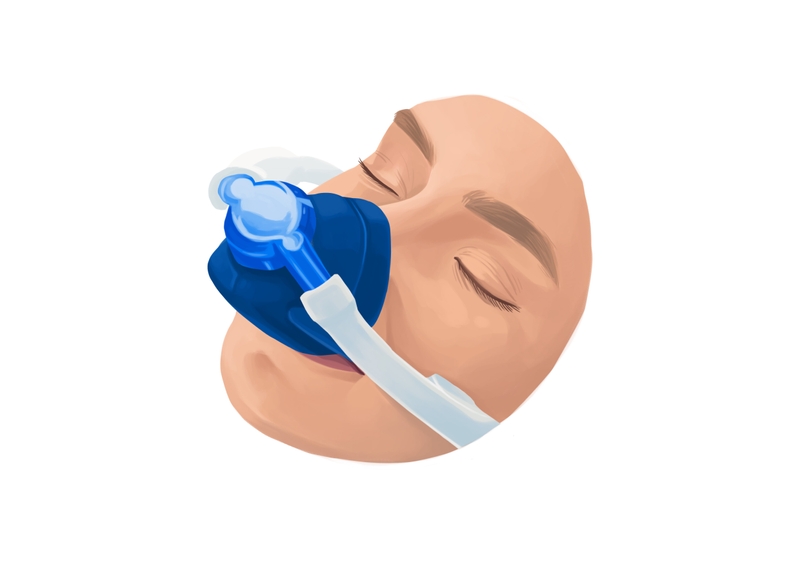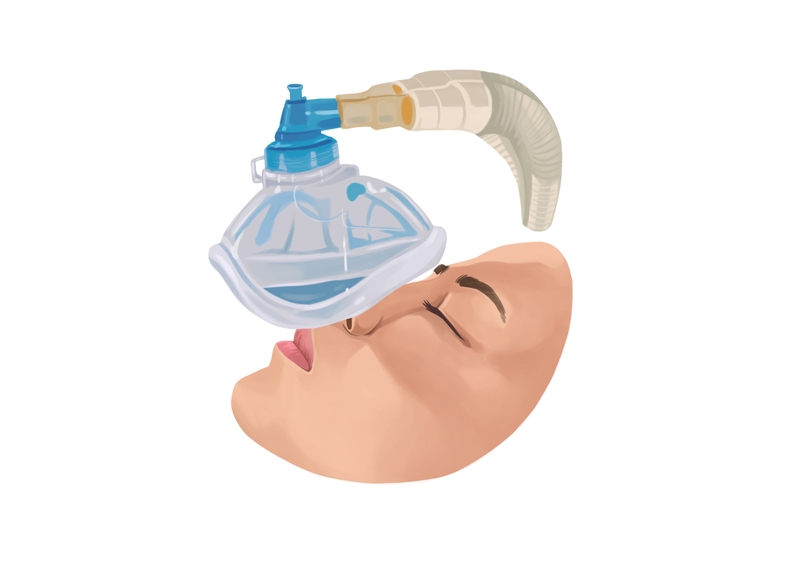- Dental anesthesia is necessary to relieve pain during dental procedures. The duration of anesthesia depends on its type.
- Local anesthesia is the most commonly used type of anesthesia. Sedation is used for patients who suffer from dental anxiety.
- General anesthesia is the most expensive type of anesthesia. Doctors use it only in extreme situations for complex dental procedures.
Dental emergency? Use Authority Dental to find urgent dental care near you. It’s easy, secure and free.
What happens during dental anesthesia? Here's everything you need to know.
Local anesthetic

Picture by Authority Dental under CC 2.0 license
Local anesthesia is the most common method of pain control at the dental office. It is used with most procedures other than routine exams, X-rays, and cleanings.
When it is used
If you’ve ever had a cavity filling you are probably familiar with it already. It is also used when preparing teeth for crowns, treating gum disease, and during root canal treatment.
The bravest of us might do with no more than a local anesthetic during simple extractions.
How it works
It is administered by injection. A topical anesthetic might be used to numb the area before it is pierced with the needle.
The syringe will be filled with a chemical (often this is lidocaine, also known as xylocaine or lignocaine). It works by blocking the nerves that sense pain and carry the information to your brain.
The lidocaine might be supplemented with trace amounts of epinephrine. It helps to improve the intensity and duration of the anesthesia as well as control bleeding.
Duration and intensity
Lidocaine is not very intense, especially at such a small dosage. It will certainly prevent you from feeling pain in that specific area, but you will remain fully awake and aware.
You won’t feel any effect on your body after a few hours. It will be perfectly fine for you to drive yourself home after the procedure. If you experience discomfort at this point you will have to take an aspirin or another painkiller.
Costs
A local anesthetic will most likely be included in the price of the procedure you are having.
It would be unreasonable to charge for it separately, as it is an inherent part of any painful procedure. It prevents you from moving around due to pain or anxiety, which would make the treatment difficult for the dentist and unsafe for you.
Sedation

Picture by Authority Dental under CC 2.0 license
Sedation is used to relax patients during procedures that could cause dental anxiety. Sedation includes conscious sedation, intravenous sedation, and dental laughing gas. The last is commonly used in pediatric dental anesthesia.
When it is used
Sedation in dentistry is most often used when the patient is undergoing oral surgery. Procedures like tooth extraction and wisdom tooth removal are most common. If you are highly sensitive, you may also take advantage of this option during root canal treatment.
How it works
Sedation can be administered via the lungs or vein or orally. You will feel drowsy and might not remember the procedure. Sedation does not put you under and you are likely to be able to follow simple directions.
Duration and intensity
These aspects are dependent on how the sedative was delivered. If you breathed it in, the effects will be very short-lived. You should start to feel normal within minutes of cutting the supply.
If the sedative was given to you orally, you shouldn’t drive yourself home. You are likely to feel dizzy and disoriented for a few hours after your procedure.
IV sedation can even make it difficult to concentrate the next day. It is important to organize someone who will assist you during this time.
Costs
Sedation is expensive. Some offices charge per hour, or even per fifteen-minutes increments. You can expect a charge of $50-$200, depending on how long your procedure takes. Insurance is unlikely to cover the cost.
General anesthesia

Picture by Authority Dental under CC 2.0 license
This is the most expensive type of anesthesia. It is only recommended in extreme situations.
When it is used
This type of anesthesia is used with heavy-duty dental work and for patients with special needs. Oral surgery, with complex wisdom tooth extraction in particular, is a common opportunity to use it.
Other instances when this type of anesthetic can be taken advantage of include implant placement.
How it works
General anesthesia can be administered orally, via the lungs, or by way of a vein. A chemical with properties that interrupt nerve signals will make you doze off.
Someone other than your dentist or oral surgeon will be sedating you. You will probably be fully out within a couple of minutes. A dental anesthesia assistant will be present the entire time.
Duration and intensity
You will be completely unaware of your surroundings. It might take up to an hour after the surgery is finished for you to regain consciousness.
Even then you might feel drowsy. You are going to have to be driven home, that is if you haven’t arranged to stay in a hospital overnight.
Costs
This is the most expensive kind of anesthesia. It requires an anesthesiologist, which drives up the price greatly. Not many offices have the means to do this. The initial fee for general anesthesia might be around $250, while each additional fifteen minutes might be around $200.

As with other types of sedation that are charged this way, it is difficult to predict how long you will have to be under. Complex procedures such as the ones mentioned above often pose unexpected issues which can drag the process out.
Side effects
Even if you aren’t allergic to the drugs used and even if everything is done properly, you still might experience minor side effects. Here are a few you might expect:
lightheadedness,
euphoria,
confusion,
dizziness,
drowsiness,
ringing in your ears,
blurred vision,
vomiting,
slow or fast heart rate,
low or high blood pressure, or
tingling.

None of these, however, will last very long. If you still feel uneasy the day after you should consult with a doctor.
FAQ
Which dental procedures require the use of anesthesia?
How painful is dental anesthesia?
Anesthesia itself was designed to stop you from experiencing pain. You might feel discomfort during application, though.
A local injection can cause irritation, similarly to IV or general anesthesia, which also require tissue to be pierced. You might have slight bruising or tenderness after the procedure. Other types like orally-administered conscious sedation or laughing gas should not cause any inconvenience.
What does dental anesthesia feel like?
Depending on the severity, you might be fully conscious, able to follow instructions, or completely put under. The lightest forms are topical injections and laughing gas. The latter might make you feel drowsy, but you should be able to drive yourself home.
IV and conscious sedation induce the effect of grogginess enough that you won’t be able to remember the procedure. You will, however, be able to follow simple commands such as “sit up” or “spit”. General anesthesia, on the other hand, knocks you completely unconscious, probably for a few hours after the procedure as well.
How long does it take for dental anesthesia to wear off?
Laughing gas should wear off almost instantly. A local injection will block nerve pathways for a few hours. After that you might have to rely on OTC painkillers. It won’t have any effect on your mental state.
Conscious and IV sedation will take a couple hours to leave your system. General anesthesia lasts the longest and you might have to stay in the hospital overnight.
Is dental anesthesia safe?
Dental anesthesia complications include such as prolonged drowsiness or nausea. There is no need to worry about serious danger unless you have a condition that prohibits the use of sedation.
In the case of more invasive forms, an anesthesiologist will oversee the procedure and be present the entire time. Before administering the dental anesthesia drug, the doctor will conduct a thorough medical review. This allows the team to pick the best medication and makes the procedure safe.
What happens if you swallow dental anesthesia?
Namrita Harchandani, DMD
No matter whether you choose any type of sedation, local anesthetic is always used. It is part of the cost of the procedure.